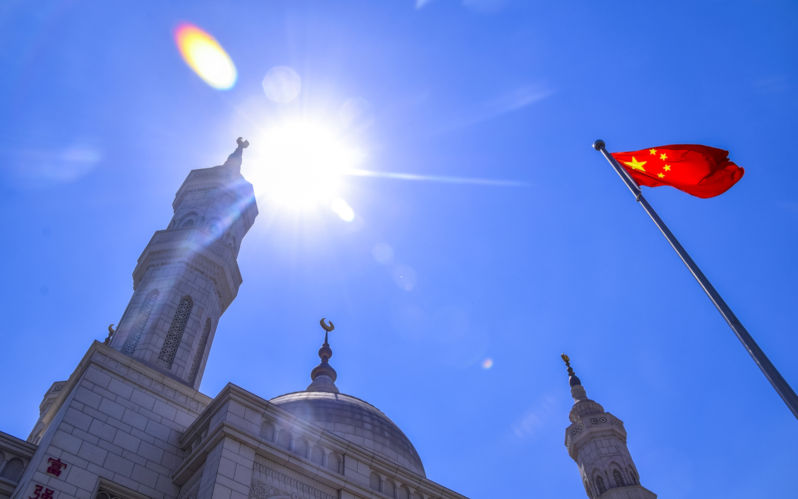China’s partnership with Muslim world is redrawing global landscape
June 28, 2025
Once seen as unlikely partners, this axis is now grounded in respect, sovereignty and a shared aspiration for a post-Western world order.
As Gaza endures unrelenting Israeli bombardment, the humanitarian toll is staggering: more than 55,000 Palestinians killed and millions displaced. This catastrophe not only evokes moral outrage but also highlights the collapse of the Western-led international order.
The June 13 Israeli strikes on Iran’s nuclear and military sites under “Operation Rising Lion” and Iran’s swift missile retaliation pushed the region to the edge of a broader war. That risk escalated further on Sunday when the United States launched coordinated strikes on several key Iranian nuclear facilities, including Fordow, Natanz and Isfahan.
What this spiralling confrontation underscores is a sobering reality: the West is no longer capable of imposing stability on its terms. Amid this geopolitical fragmentation, a consequential shift is under way – an alignment between China and the Muslim world. Once seen as unlikely partners, this axis is now grounded in respect, sovereignty and a shared aspiration for a post-Western world order.
China’s engagement with the Muslim world is not impulsive but strategic. Through the Belt and Road Initiative, it has invested heavily in infrastructure and logistics in countries such as Pakistan, Egypt, Iran and Saudi Arabia. Unlike the traditional aid programs of Western powers, Chinese aid offers an alternative that is appealing to nations scarred by colonial legacies and structural adjustment programs.
A pivotal moment came in 2023 when China helped bring Iran and Saudi Arabia to the table and re-establish diplomatic ties. Where decades of Western diplomacy failed, China’s quiet negotiations prevailed. It marked China’s rise not only as an economic juggernaut but as a credible stabiliser, particularly in regions where US policy has often deepened instability.
This alignment extends beyond geopolitics. It is rooted in shared calls for multipolarity, respect for civilisational values and more equitable global governance. These aspirations are taking shape in forums such as the expanded Brics grouping — which now includes Egypt, Iran and the United Arab Emirates — and the Shanghai Co-operation Organisation, platforms enabling Global South co-operation outside NATO or Group of 7 structures.
In Southeast Asia, Malaysia stands out as a bridge between China and the Muslim world. With historical ties to both and a consistently non-aligned foreign policy, Malaysia can play a mediating role across economic, cultural and strategic spheres.
Its leadership in Islamic finance and halal certification, for example, positions it to facilitate Chinese access to Muslim markets. It hosts major halal expos and Islamic finance summits involving Chinese firms seeking to align with Muslim consumer standards.
Through its active role in the Organisation of Islamic Co-operation, Malaysia amplifies the shared concerns of the Muslim world in conversations with Beijing. As China expands its presence in the Middle East, Africa and Central Asia, Malaysia can serve as a critical commercial and diplomatic gateway.
Indonesia, the world’s largest Muslim-majority country, also exemplifies this realignment. With its focus on maritime sovereignty, digital innovation and partnerships with other Global South nations, Jakarta is engaging China confidently without compromising its political autonomy. This model — collaboration without dependency — is increasingly attractive among Muslim-majority nations.
The emerging alignment between China and the Muslim world also reflects growing disillusionment with neoliberal globalisation. Many Muslim states are facing complex transitions amid urbanisation, demographic pressures, climate vulnerability and inequality. Western-dominated institutions such as the International Monetary Fund and World Bank have at times failed to provide sustainable solutions. China, by contrast, offers alternatives in digital finance through the digital yuan, infrastructure via the Asian Infrastructure Investment Bank and innovation partnerships in artificial intelligence and green energy.
Even so, this relationship is not without its frictions. The Muslim world is deeply diverse. From Turkey’s regional assertiveness to internal rivalries in the Gulf, and from Pakistan’s security dilemmas to North Africa’s political flux, a unified strategy remains elusive. Security ties with the West further complicate cohesion.
China itself faces criticism. Debt-related concerns over the Belt and Road Initiative, opaque contractual terms and, critically, the treatment of Uygur Muslims in Xinjiang have sparked backlash across Muslim populations. While some governments compartmentalise these issues for economic reasons, public perception — especially in democratic societies — cannot be ignored. For this partnership to endure, China must adopt a more transparent, inclusive and culturally sensitive diplomacy.
Importantly, the realignment should not be cast as an anti-Western Cold War redux but as a recalibration of influence. Western policymakers would do well to consider engaging with this emerging axis as a potential partner in solving global challenges, including climate change, future pandemics, digital inequality and food insecurity.
The future offers considerable promise. Joint ventures in Islamic fintech, blockchain-based trust systems, climate-resilient infrastructure and multilingual educational exchanges can cement deeper co-operation. China’s interest in securing long-term food and energy supply chains aligns with the Muslim world’s pursuit of green growth and agricultural innovation.
More profoundly, this partnership may help democratise global governance. Reforming the UN Security Council, revisiting trade rules under the World Trade Organisation and reshaping development finance will require coalitions grounded in legitimacy and broad representation. The China-Muslim world axis can be such a coalition, not by mimicking current power structures but by offering a new kind of leadership based on shared values and mutual dignity.
We are witnessing the rise of a new centre of gravity. As the Western-led order faces growing internal fractures, the partnership between China and the Muslim world is no longer peripheral. It is not a rebellion but rather a renaissance.
Republished from South China Morning Post, 25 June 2025
The views expressed in this article may or may not reflect those of Pearls and Irritations.
